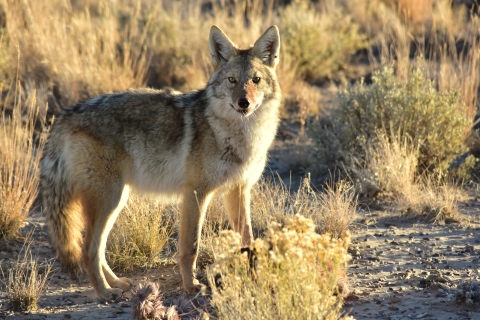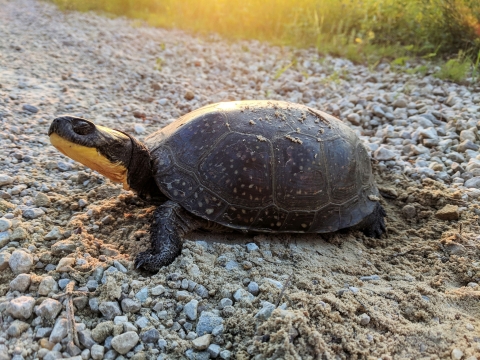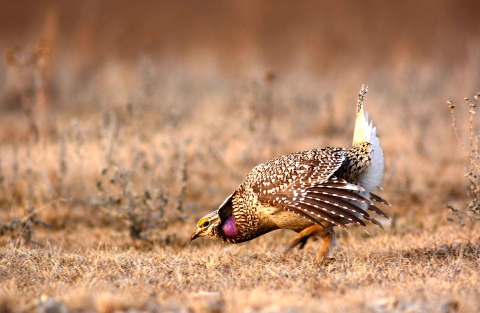Featured Species
Valentine National Wildlife Refuge is home to 270 species of birds, 59 species of mammals, and 22 species of reptiles and amphibians. Please visit https://birdtrail.outdoornebraska.gov/valentinerefuge/ for a complete list of Refuge birds.
Coyote
The best time to see coyotes is to hear them! They generally put on a fine concert each evening as the sun sets. Pairs or packs of coyote exchange howls, yodels, yips, and barks, that can be heard for long distances on a still evening. The best chance to see them is on an early winter morning as they travel on frozen lakes. In the spring they dig out dens on a sandy side hill to raise their pups. The are predators that feed on mice, frogs, birds and bird eggs, but will also eat fruits, berries, and carrion.
Blanding’s Turtle
The beautiful Blanding’s turtle lives in wetlands but travels to the sandy hills to nest. They sometimes move great distances between nesting, summer, and winter habitats. Blanding’s may live up to 70 years of age, do not reach sexual maturity until their teens, and do not lay a large number of eggs. As with other long-lived animals, death of a large number of adults can significantly reduce populations. Special fences, that prevent turtles from entering the roadway and potentially being killed have been built along US Highway 83.
Prairie Grouse
Sharp-tailed grouse and prairie chickens can be found here, and prefer large expanses of prairie which can be found on Valentine Refuge and the surrounding areas. Refuge grasslands are managed to provide both nesting and brood rearing cover. Refuge biologists survey their numbers in the spring when they gather at traditional mating grounds called leks. This is also the best time for visitors to see them up close putting on the best show on the prairie. The Refuge provides reserved blinds for viewing and photography.




